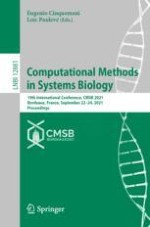2021 | OriginalPaper | Chapter
Explainable Artificial Neural Network for Recurrent Venous Thromboembolism Based on Plasma Proteomics
Authors : Misbah Razzaq, Louisa Goumidi, Maria-Jesus Iglesias, Gaëlle Munsch, Maria Bruzelius, Manal Ibrahim-Kosta, Lynn Butler, Jacob Odeberg, Pierre-Emmanuel Morange, David Alexandre Tregouet
Published in: Computational Methods in Systems Biology
Publisher: Springer International Publishing
Activate our intelligent search to find suitable subject content or patents.
Select sections of text to find matching patents with Artificial Intelligence. powered by
Select sections of text to find additional relevant content using AI-assisted search. powered by
